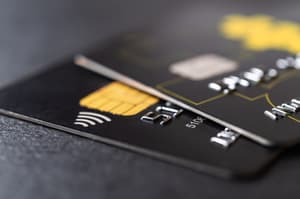Debit cards 101

A debit card is a payment tool that can enable individuals to spend the money they already have, drawing funds directly from their account balance. With a swipe or a simple tap, people can gain access to their available cash, allowing for seamless purchases both online and in person.
Debit cards are also known as bank cards and can come in various forms. Examples include:
- Standard debit cards. These debit cards are issued by banks, credit unions, and online providers. They allow people to access and spend funds from a checking account or associated account balance.
- Prepaid debit cards. Prepaid debit cards are loaded with a specific amount of money that can be spent until the balance is fully used up.
- Electronic benefits transfer (EBT) cards. These specialized pay cards are used to distribute government benefits to eligible individuals and families.
- Health savings account (HSA) debit cards. HSAs are used for medical expenses and can allow cardholders to pay for qualified healthcare services or products from their HSA funds.
How does a debit card work?
With debit cards, the information associated with the card is linked directly to an account. When making a purchase with a debit card, the transaction amount is deducted from the associated account balance.
Typically, only the amount of available funds in the account can be used. However, some card providers may allow purchases that exceed the amount of available funds and then charge an overdraft fee.
Debit cards may also have daily spending limits. Limits may vary depending on the card provider, the associated account, and the type of card.
How to use a debit card
People can use debit cards at point-of-sale terminals by swiping, inserting them into a chip reader, or tapping for contactless payments. They can also be used for online transactions by entering the debit card number and details. Availability of tap to pay and chip methods may vary depending on the card.
But other than standard online and in-person purchases, what are debit cards used for? Here are some common examples:
- Withdrawing cash from ATMs
- Transferring funds via money transfer apps
- Paying bills
How to get a debit card
The process to get a debit card may vary depending on the card provider. For example, some banks or credit unions will often issue a debit card automatically to someone opening a checking account.
People seeking to set up a checking account to access a debit card typically need to provide such things as:
- Government-issued photo ID
- Social security number
- Proof of address
- Income information
Once an account is open, the account holder can request a debit card or will be sent one automatically (depending on the provider). Fees may apply depending on the account and account provider.
Online providers may require a similar process. People that already hold an account with an online provider may have to apply or submit a request for a debit card. For instance, to apply for a PayPal Debit Card, individuals need to have a PayPal personal account with a PayPal Balance account.1
Upon receiving a debit card, cardholders will need to follow the provided instructions to activate it, often by phone or through an online portal. They’ll set a secure personal identification number (PIN) for transaction authorization and ATM access.
With an activated and PIN-protected debit card, individuals can make purchases, cash withdrawals, and other eligible transactions according to the card provider’s policies and limitations.
Debit card fees
Debit cards generally don't have fees for everyday use. However, it's important to consider potential fees that may apply in certain cases.
Here are a few examples of debit card fees:
- ATM fees may occur when using an ATM that is not affiliated with the account holder’s bank or provider.
- Overdraft fees may be charged if the account holder spends more money than what’s available in the account.
- Debit card transaction fees can be added for certain payments like international transactions or cash advances.
- Associated account fees may apply depending on the type of account and the account provider. For example, some providers may charge a monthly service fee for usage of checking accounts.
Potential fees may vary depending on the card provider and type of card.
Debit card FAQ
All in
the new
PayPal app
It's your do-it-all digital wallet. Load up on cash back offers before you shop. Track your packages. And manage it all on the go.